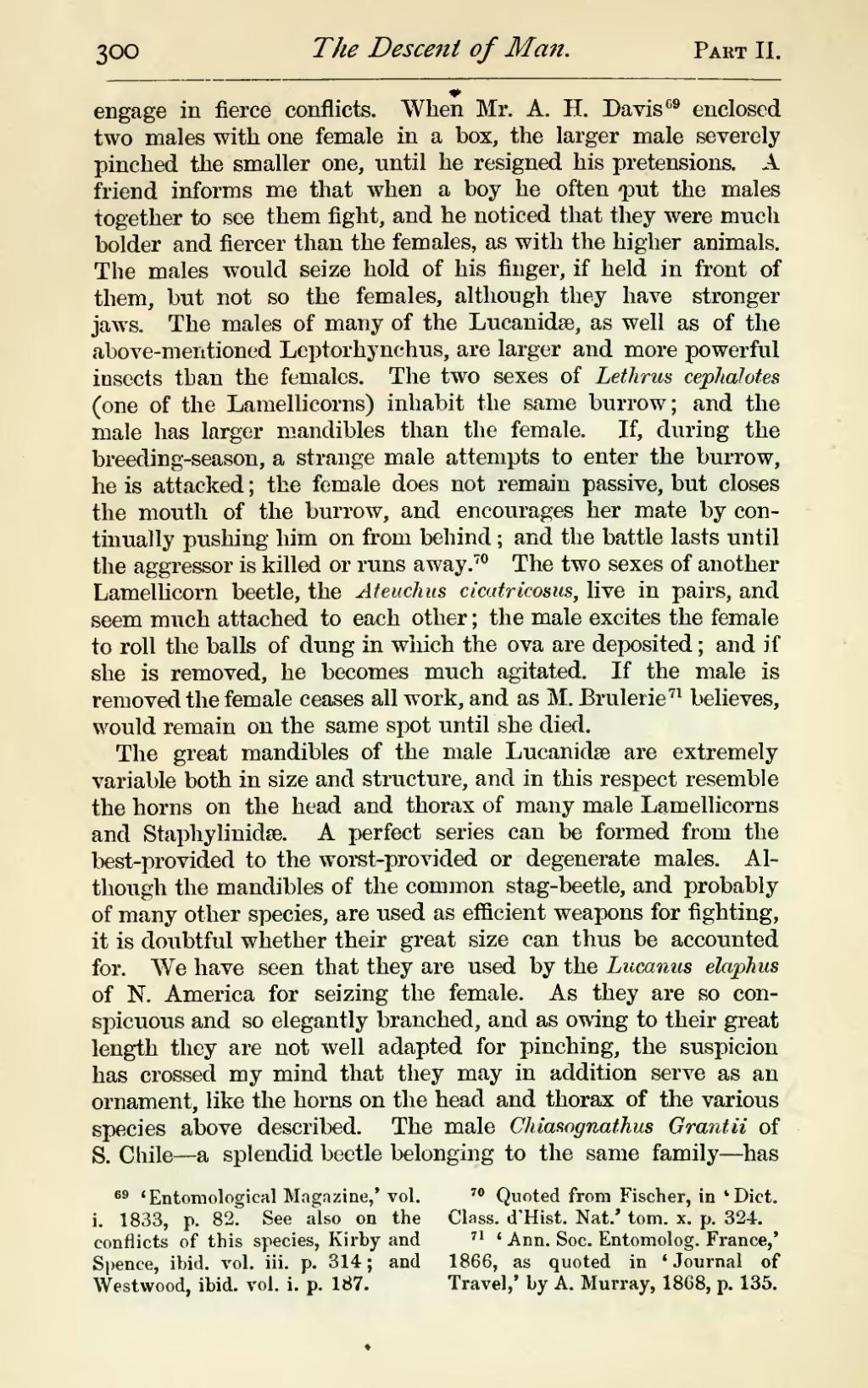engage in fierce conflicts. When Mr. A. H. Davis[1] enclosed two males with one female in a box, the larger male severely pinched the smaller one, until he resigned his pretensions. A friend informs me that when a boy he often put the males together to see them fight, and he noticed that they were much bolder and fiercer than the females, as with the higher animals. The males would seize hold of his finger, if held in front of them, but not so the females, although they have stronger jaws. The males of many of the Lucanidæ, as well as of the above-mentioned Leptorhynchus, are larger and more powerful insects than the females. The two sexes of Lethrus cephalotes (one of the Lamellicorns) inhabit the same burrow; and the male has larger mandibles than the female. If, during the breeding-season, a strange male attempts to enter the burrow, he is attacked; the female does not remain passive, but closes the mouth of the burrow, and encourages her mate by continually pushing him on from behind; and the battle lasts until the aggressor is killed or runs away.[2] The two sexes of another Lamellicorn beetle, the Ateuchus cicatricosus, live in pairs, and seem much attached to each other; the male excites the females to roll the balls of dung in which the ova are deposited; and if she is removed, he becomes much agitated. If the male is removed the female ceases all work, and as M. Brulerie[3] believes, would remain on the same spot until she died.
The great mandibles of the male Lucanidæ are extremely variable both in size and structure, and in this respect resemble the horns on the head and thorax of many male Lamellicorns and Staphylinidæ. A perfect series can be formed from the best-provided to the worst-provided or degenerate males. Although the mandibles of the common stag-beetle, and probably of many other species, are used as efficient weapons for fighting, it is doubtful whether their great size can thus be accounted for. We have seen that they are used by the Lucanus elaphus of N. America for seizing the female. As they are so conspicuous and so elegantly branched, and as owing to their great length they are not well adapted for pinching, the suspicion has crossed my mind that they may in addition serve as an ornament, like the horns on the head and thorax of the various species above described. The male Chiasognathus Grantii of S. Chile—a splendid beetle belonging to the same family—has
- ↑ 'Entomological Magazine,' vol. i. 1833, p. 82. See also on the conflicts of this species, Kirby and Spence, ibid. vol. iii. p. 314; and Westwood, ibid. vol. i. p. 187.
- ↑ Quoted from Fischer, in 'Dict. Class. d'Hist. Nat.' tom. x. p. 324.
- ↑ 'Ann. Soc. Entomolog. France,' 1866, as quoted in 'Journal of Travel', by A. Murray, 1868, p. 135.

